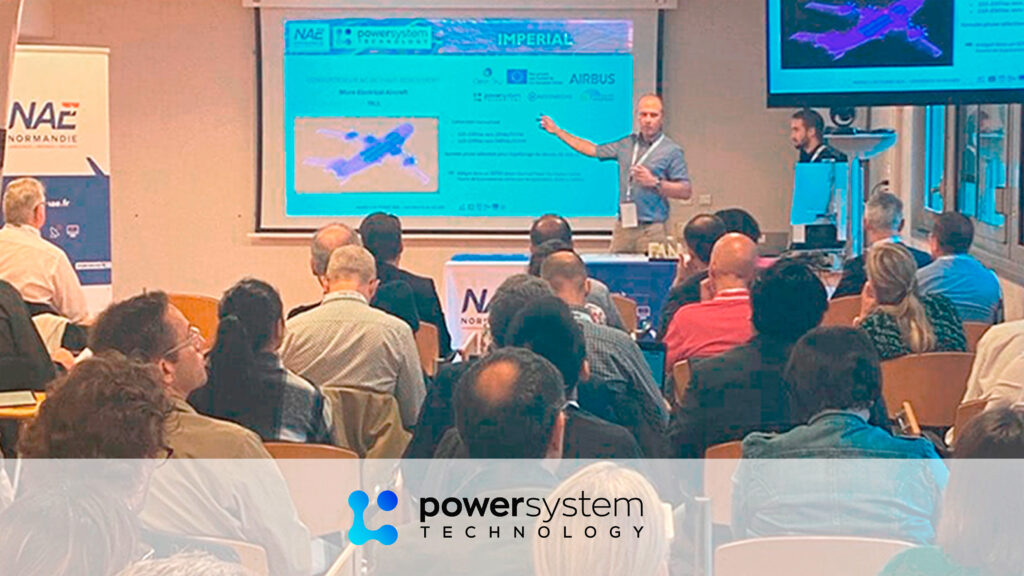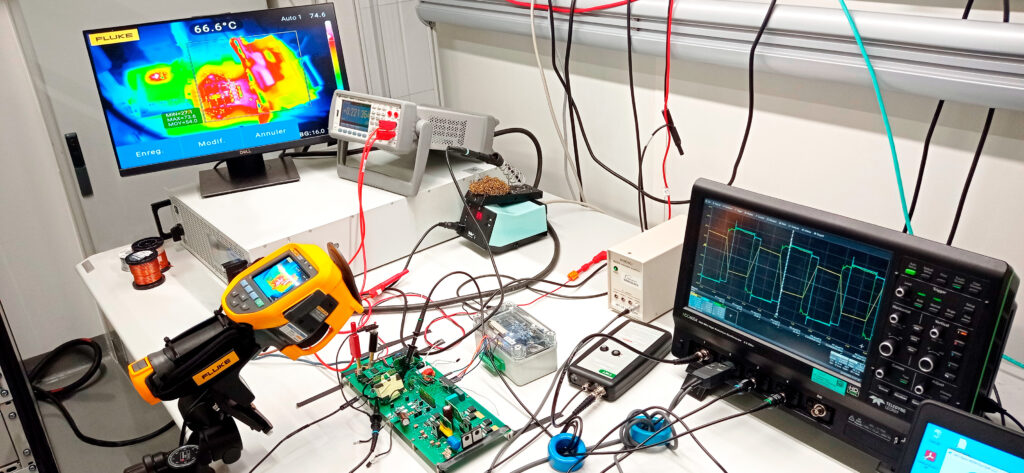
Find out what’s new in Power Electronics at Electronica 2024!
Join us in Munich for world’s leading trade fair for electronics! Our team will be pleased to meet you in person at the international Electronica

Share the news
Coordinator on IMPERIAL’s project, in the frame of Clean Sky 2, Power System Technology is co-developing an innovative module for power conversion on aircraft platform.
IMPERIAL PROJECT
Funded by the European Union, the IMPERIAL project aims at creating a cutting-edge high-voltage AC-DC converter designed for the power distribution systems of next-gen aircraft. The newly developed power converter showcases capabilities in power transmission, monitoring, diagnostics, and communication, all while maintaining high efficiency, reliability, and a compact, lightweight design suitable for integration into upcoming airliner.
The IMPERIAL Consortium brings together their world leading expertise in the design and manufacturing of integrated Power Electronics (PE), advanced digital control systems, thermal management, electronic circuit modeling, and simulation for aerospace applications.
Coordinator

Power System Technology
Consortium members

IRT Saint Exupéry

Aeromechs

Airbus
Highly efficient, reliable, compact, and light, the IMPERIAL converter contributes towards higher performances, more efficiency and a greener future for large passenger aircraft.
Such converters are used to drive electric motors in stationary and mobile applications. This project showcases a new circuit topology integrating innovative components such as low and high voltage GaN and SiC cascodes into the new converter architecture and by reducing loss, we were able to build an extremely light-weight converter that offers a high “specific power density” (the ratio of power to weight).

>96 % efficiency
No cooling
Specific power > 5 kW/kg (converters and filtering)
Power to volume density > 3 kW/dm3
Comply with DO-160G standards
Voltage control error less than +/- 0,5 %
Current control error less than +/- 0,5 %
Reference tracking within 10 ms from the setpoint variation
Occurrence of total system loss event less than 10-7
30% reduction in testing time before integration on the test bench
Outline of Clean Sky 2:
The large commercial aircraft market (generally seen as civil aircraft with a capacity exceeding 100 seats and covering short/medium and long range missions) remains highly competitive, with several new entrants having the means to reach a technology level comparable to legacy US and European manufacturers. Their ambition is often coupled with strong government support, expectations for a captive “home” market, and low costs and pricing.
The objective is to further mature technologies tackled in Clean Sky for Large Passenger Aircraft, and to add the validation of additional key technologies at an integrated level with large scale demonstrators in operational conditions. Regulation with respect to energy efficiency and impact on the environment fulfill future market needs and improving the competitiveness of future products.

CLEAN SKY is a european cooperation partnership between the public and private sectors whose aim is to develop and explore cutting-edge technologies that will make aviation climate-neutral by 2050.
Over the years, it has become the European Commission’s flagship public-private partnership for developing sustainable aviation technologies.
Clean Sky’s objective is to advance cleaner air transport technologies for prompt implementation, involving the integration, exhibition, and verification of technologies with the potential to decrease CO2, NOx, and noise emissions by 20 to 30% compared to modern aircraft introduced since 2014. In addition to enhancing the environmental performance of aviation technologies, including those for small aircraft, Clean Sky 2 also aims to foster a robust and internationally competitive aeronautical industry and supply chain within Europe.
Here you can find details of the consortium : https://cordis.europa.eu/project/id/101007513
* This project has received funding from the European Union’s Horizon 2020 Research and Innovation program under Grant Agreement no. H2020-JTI-CS2-2020-CFP11-SYS-02-63. The information here reported reflects only the partners’ view; CleanSky 2 is not responsible for any use that may be made of such information
Discover more

Find out what’s new in Power Electronics at Electronica 2024!
Join us in Munich for world’s leading trade fair for electronics! Our team will be pleased to meet you in person at the international Electronica

Meet our team at Aerospace & Defense meetings Torino 2023
Our Power Electronics (PE) design office is attending Aerospace & Defense B2B Meetings in Turin A&DM Torino is the international B2B matchmaking event for aerospace